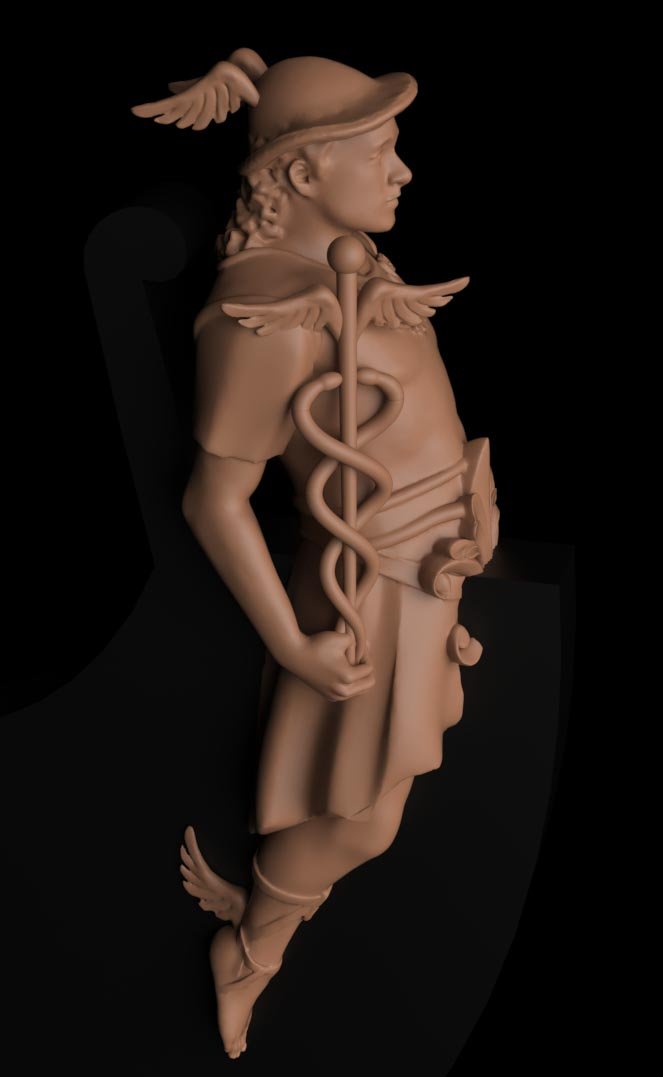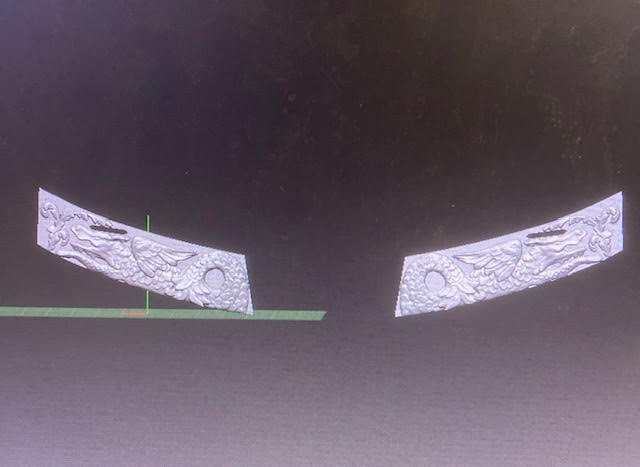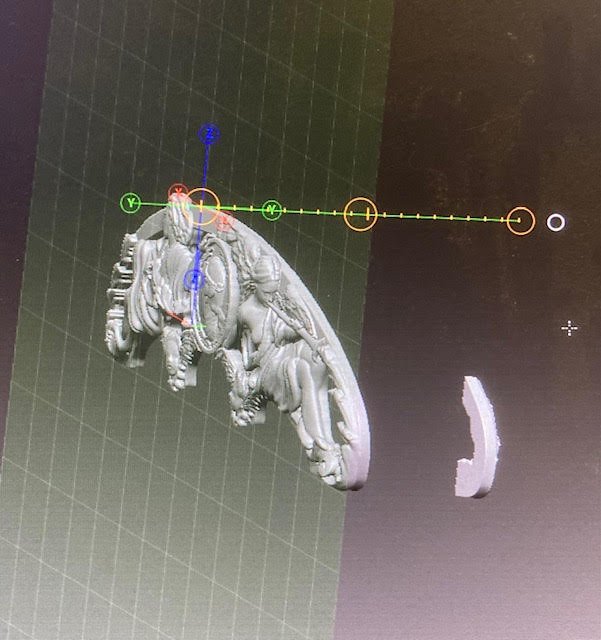-
Posts
9,670 -
Joined
-
Last visited
Content Type
Profiles
Forums
Gallery
Events
Everything posted by Chuck
-
Before you do give up…you might consider just sanding all of those little steps down smooth and planking without them. It may prove to be easier. Or almost remove them all but leave just a faint visible reminder of each strake to help you keep the planking run on track. Then just plank it clinker style on smooth frames. you may not end up with the same amount of planks but its the easier solution. just sand the top edge of each finished row of planking down flush to the frames and overlap the next row. Make the ends going i nto the rabbets not clinker…slowly even those out.
-
Beautiful work on the Cheerful.
- 113 replies
-
- Cheerful
- Syren Ship Model Company
-
(and 1 more)
Tagged with:
-
Beautifully done!!! You are getting close to the finish line now.
- 113 replies
-
- Cheerful
- Syren Ship Model Company
-
(and 1 more)
Tagged with:
-
That is looking excellent.
- 155 replies
-
- Medway Longboat
- Syren Ship Model Company
-
(and 1 more)
Tagged with:
-

Band Saw Recommendations
Chuck replied to ChrisLBren's topic in Modeling tools and Workshop Equipment
I have a lot of blades...I usually stick to the laguna pricey blades but do use the wood slicer for soft stuff like the cedar. But the Laguna resaw king blades are wonderful. But you do get stuck with the occasional badly made blade that breaks along the weld. But they do take them back with no questions asked. I will certainly try the blade you recommended also. I prefer the 1/2" blade. Slow and steady...let the blade cut and dont push to fast. If you rush and push the wood through to force it quicker, especially on wide boards you are looking for trouble. I usually cut all my sheets and sand them the next day. This is what Joe does at modelers sawmill as well. In fact he has a laguna too....same one. It all depends if you like the ceramic guides vs. the steel wheels. I dont mind the ceramic guides. They are a pain to change, but I havent had any issues. Guide set-up is key....getting them the correct distance from the blade and not a large gap is the key....just touching them almost.... You will know once you start using one. Chuck -

Band Saw Recommendations
Chuck replied to ChrisLBren's topic in Modeling tools and Workshop Equipment
I can highly recommend the Laguna 14/BX. Its more than 2HP which makes it easy to cut through hardwoods at even 6" wide. I have used it without fail to resaw sheets from billets of wood. Yes its pricey but everything good is a bit more expensive. I have had mine for over 5 years if not more. https://lagunatools.com/classic/bandsaws/14bx-bandsaw/ There are lesser models with slightly less HP which would be fine if you are only cutting for yourself. The more HP was used to resaw sheets for sale and is used and abused. Chuck -
Very very nice Mike. They look perfect. I know how hard these can be. You did a fantastic job on those headrails. The grating and remaining headwork will be a breeze by comparison.
- 607 replies
-
- winchelsea
- Syren Ship Model Company
-
(and 1 more)
Tagged with:
-
nicely done. That is a tricky part for sure.
- 642 replies
-
- winchelsea
- Syren Ship Model Company
-
(and 1 more)
Tagged with:
-
Looking really good!!! So nice when you get this stage. Each bit of progress makes a huge difference visually which helps keep you going.
- 840 replies
-
- winchelsea
- Syren Ship Model Company
-
(and 1 more)
Tagged with:
-
Seriously Greg. That will be a hard act to follow. You need to post so many more photos. Be sure to add them to the gallery as well. I am still plugging away on square frames for my Speedwell. I have photos of yours all around my shop for inspiration. Just a lovely model.
-
Just sand the fuller down so it fits leaving a little lip. Even if you only have the slightest point of an edge it will be fine. You can also sand or chisel the planking a bit thinner too so you have even more area to work with. no big deal here…very workable
- 389 replies
-
- winchelsea
- Syren Ship Model Company
-
(and 1 more)
Tagged with:
-
She really does look nice. Well done.
- 389 replies
-
- winchelsea
- Syren Ship Model Company
-
(and 1 more)
Tagged with:
-
Nope...that is entirely wrong for Winnie...no sweep ports or extra wide wales. Please disregard that for Winchelsea. Yes the Southhampton has sweeps and was very different. It even had the old beakhead bulkhead at the bow. There are some beautiful drafts of that class available. But sadly no contemporary models. Check out the width of the wales. Chuck
- 389 replies
-
- winchelsea
- Syren Ship Model Company
-
(and 1 more)
Tagged with:
-
That looks pretty darned good. Well done and worth the time and effort.
- 389 replies
-
- winchelsea
- Syren Ship Model Company
-
(and 1 more)
Tagged with:
About us
Modelshipworld - Advancing Ship Modeling through Research
SSL Secured
Your security is important for us so this Website is SSL-Secured
NRG Mailing Address
Nautical Research Guild
237 South Lincoln Street
Westmont IL, 60559-1917
Model Ship World ® and the MSW logo are Registered Trademarks, and belong to the Nautical Research Guild (United States Patent and Trademark Office: No. 6,929,264 & No. 6,929,274, registered Dec. 20, 2022)
Helpful Links
About the NRG
If you enjoy building ship models that are historically accurate as well as beautiful, then The Nautical Research Guild (NRG) is just right for you.
The Guild is a non-profit educational organization whose mission is to “Advance Ship Modeling Through Research”. We provide support to our members in their efforts to raise the quality of their model ships.
The Nautical Research Guild has published our world-renowned quarterly magazine, The Nautical Research Journal, since 1955. The pages of the Journal are full of articles by accomplished ship modelers who show you how they create those exquisite details on their models, and by maritime historians who show you the correct details to build. The Journal is available in both print and digital editions. Go to the NRG web site (www.thenrg.org) to download a complimentary digital copy of the Journal. The NRG also publishes plan sets, books and compilations of back issues of the Journal and the former Ships in Scale and Model Ship Builder magazines.







